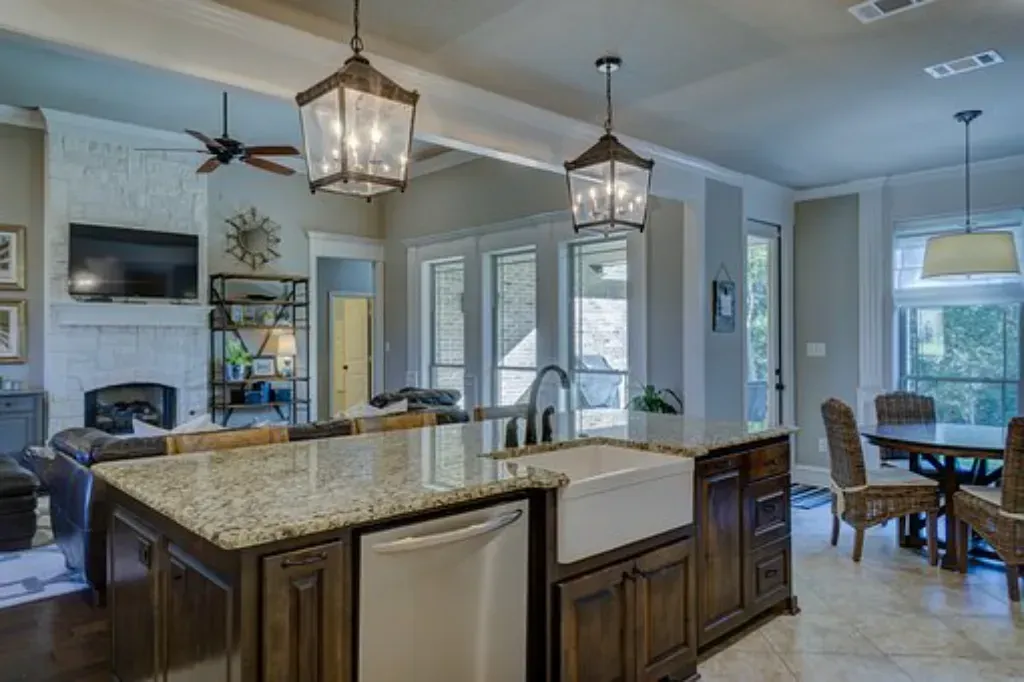DIY Kitchen Removal: How to Safely Take Apart Your Old Kitchen
Removing an old kitchen can be a daunting task, but with the right tools and knowledge it can be done safely and efficiently. Whether you’re replacing your kitchen or just want to make some changes, taking apart your old kitchen is the first step. In this article, we’ll provide you with a step-by-step guide on how to safely take apart your old kitchen.
Gather the Necessary Tools
Before you start taking apart your old kitchen, it’s important to gather all of the necessary tools. You’ll need a variety of tools depending on what type of kitchen you have, but some of the most common items include screwdrivers, pliers, wrenches, hammers, and utility knives. It’s also a good idea to have a few extra tools on hand in case something unexpected comes up during the removal process.
Once you have all of the necessary tools, it’s time to start taking apart your old kitchen. Start by removing any cabinets or drawers that are attached to the walls. Use a screwdriver or wrench to loosen any screws or bolts that are holding them in place. Once they are loose, carefully remove them from the wall and set them aside for later disposal.
Next, remove any countertops or backsplashes that are attached to the walls. Again, use a screwdriver or wrench to loosen any screws or bolts that are holding them in place. Once they are loose, carefully remove them from the wall and set them aside for later disposal.
Disconnect Appliances and Fixtures
Now that all of the cabinets and countertops have been removed, it’s time to disconnect any appliances and fixtures that may be connected to the walls or flooring. Start by unplugging any electrical appliances such as refrigerators, stoves, microwaves, dishwashers, etc. Then move on to plumbing fixtures such as sinks and faucets. Make sure to turn off the water supply before attempting to disconnect these items.
Once all of the appliances and fixtures have been disconnected, it’s time to start removing any remaining pieces of cabinetry or countertop material from the walls and floors. Use a hammer or utility knife to carefully pry away any nails or screws that may be holding these pieces in place. Once they are loose, carefully remove them from the wall and set them aside for later disposal.
Finally, if there is any tile flooring present in your kitchen it will need to be removed as well. Use a hammer or chisel to carefully break up any tiles that may be present in your kitchen flooring. Once all of the tiles have been removed, sweep up any debris and dispose of it properly.
Remove Flooring
The next step in removing your old kitchen is to remove any existing flooring material such as linoleum or vinyl tile flooring. Start by using a utility knife or chisel to carefully cut away any seams between pieces of flooring material that may be present in your kitchen flooring. Once all of the seams have been cut away, use a hammer or chisel to carefully break up any tiles that may be present in your kitchen flooring. Once all of the tiles have been removed, sweep up any debris and dispose of it properly.
If there is hardwood flooring present in your kitchen then you will need to use special care when removing it as hardwood can easily become damaged during removal if not handled properly. Start by using a pry bar or crowbar to carefully lift up one end of each board until it is free from its nails or staples securing it into place on the subfloor below it. Once each board has been freed from its nails/staples then use a hammer or chisel to gently tap each board until it is free from its subfloor below it. Finally sweep up any debris and dispose of it properly once all boards have been removed from your kitchen flooring area.
Clean Up Debris
Once all of the cabinets, countertops, appliances and fixtures have been removed from your old kitchen area it’s time for some final clean up work before you can call this project complete! Start by sweeping up any dust and debris left behind after removing everything from your old kitchen area then vacuum up anything else that may still remain on your floors after sweeping them clean with a broom/dustpan combo tool set (or similar). Finally mop down all surfaces with warm soapy water (or similar) before disposing of all debris properly according to local regulations/laws regarding waste disposal/recycling etc…
Hire Professional Help
If at anytime during this process you feel overwhelmed by what needs doing then don’t hesitate in hiring professional help! There are many experienced professionals out there who specialize in helping people safely take apart their old kitchens so don’t hesitate in reaching out for assistance if needed! A professional will know exactly what needs doing & how best go about doing it so don’t hesitate in asking for help if needed!
Conclusion
Removing an old kitchen can seem like an intimidating task but with proper planning & preparation along with having access too all necessary tools & materials needed for completing this job safely & efficiently then anyone should be able too successfully take apart their own old kitchens without needing too hire professional help! Just remember too always take safety precautions when working around electricity & plumbing lines & always dispose off debris properly according too local regulations/laws regarding waste disposal/recycling etc… Good luck & happy DIY’ing!
-
- Gather Necessary Tools
- Disconnect Appliances & Fixtures
- Remove Flooring
- Clean Up Debris
- Hire Professional Help


